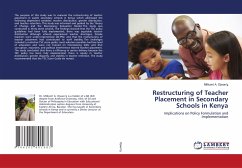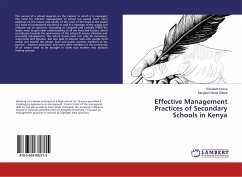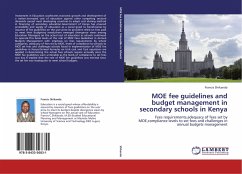The purpose of this study was to evaluate the restructuring of teacher placement in public secondary schools in Kenya which addressed the following dependent variables: teacher distribution, gender distribution, and teacher retention. This study was informed and guided by the Theory of Change and the Discrepancy Evaluation Model. The study was conducted in thirty seven schools. The findings showed that the TSC policy guidelines had been fully implemented; there was equitable teacher distribution although schools experienced teacher shortages; female teachers were under-represented (42.9%); and that the restructuring of teacher placement had contributed to staff stability. The challenges included a restrictive TSC score guide; most selection panelists had low level of education and were not trained on interviewing skills; and that corruption, nepotism, and political interference marred teacher placement. The study concluded that there is efficiency in service delivery because the TSC policy has been fully implemented; there is equity in teacher distribution; gender disparity; and stability in teacher retention. The study recommended that the TSC Score Guide be revised.
Bitte wählen Sie Ihr Anliegen aus.
Rechnungen
Retourenschein anfordern
Bestellstatus
Storno








